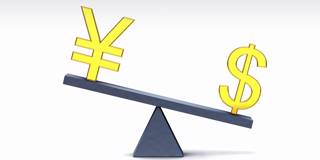Once again, new economic readings from the World Bank's International Comparison Program have fed into the long-going debate over whether China is surpassing the United States as an economic and financial power. And once again, the answer to that question is a qualified "no."
CAMBRIDGE – The World Bank’s International Comparison Program has just released its latest measures of price levels and GDP across 176 countries, and the results are striking. For the first time ever, the ICP finds that China’s total real (inflation-adjusted) income is slightly larger than that of the United States. In purchasing-power-parity (PPP) terms, China’s 2017 GDP was $19.617 trillion, whereas the US’s stood at $19.519 trillion.

CAMBRIDGE – The World Bank’s International Comparison Program has just released its latest measures of price levels and GDP across 176 countries, and the results are striking. For the first time ever, the ICP finds that China’s total real (inflation-adjusted) income is slightly larger than that of the United States. In purchasing-power-parity (PPP) terms, China’s 2017 GDP was $19.617 trillion, whereas the US’s stood at $19.519 trillion.